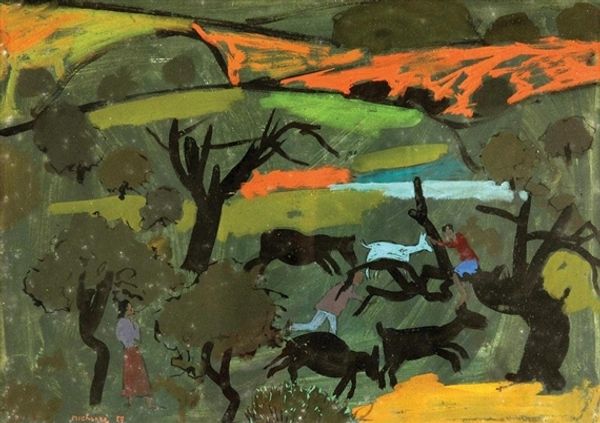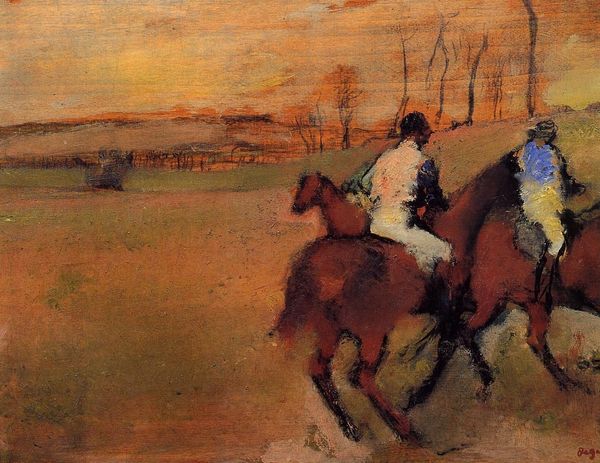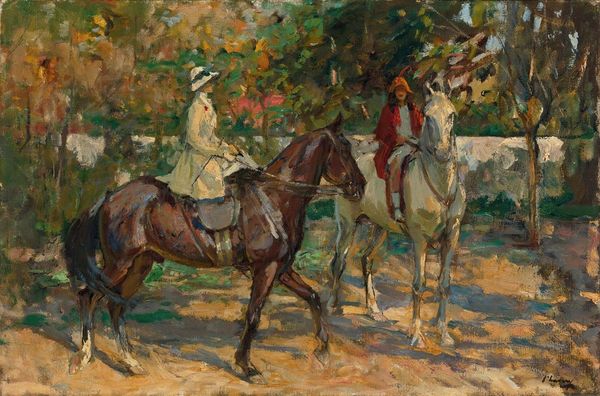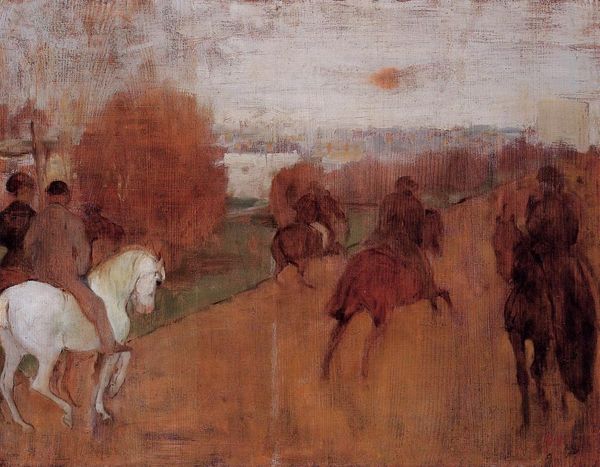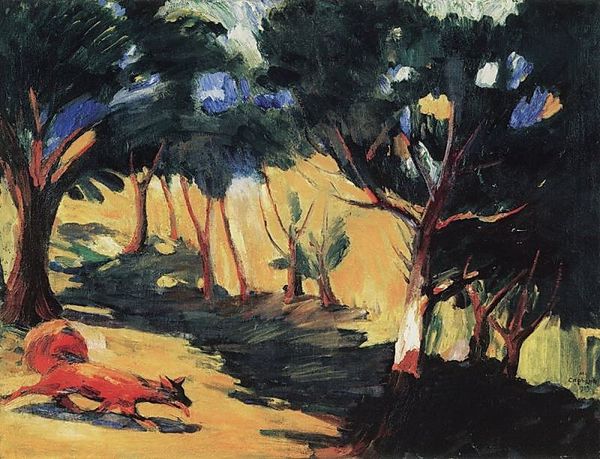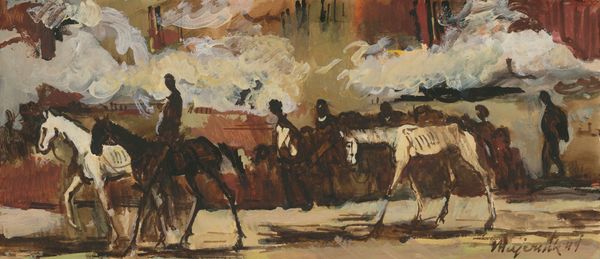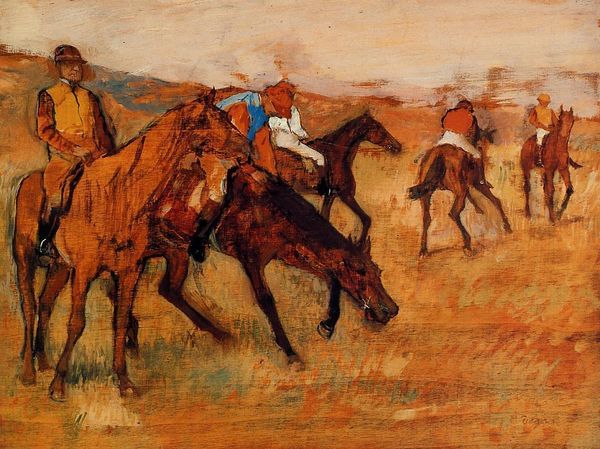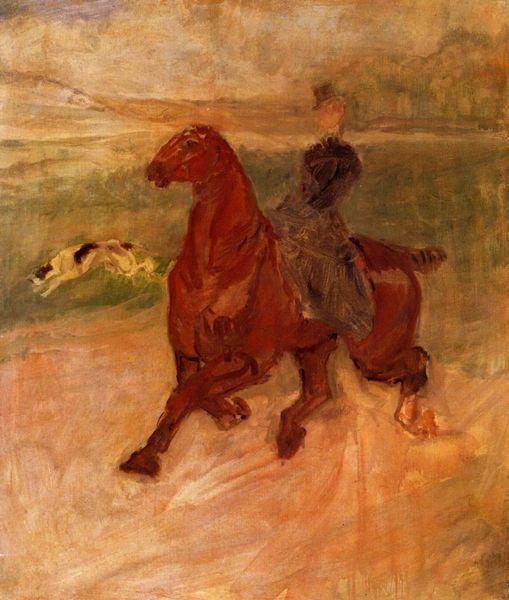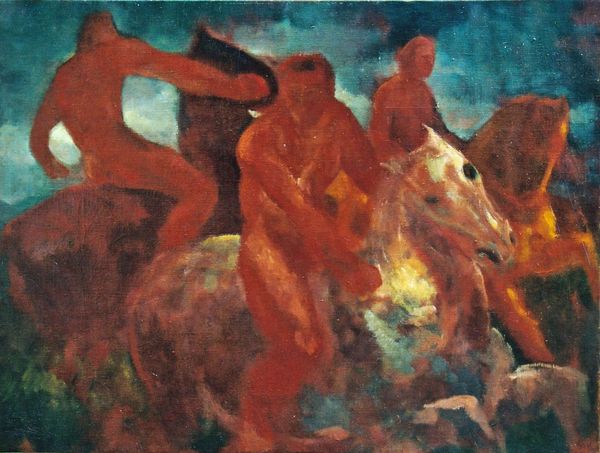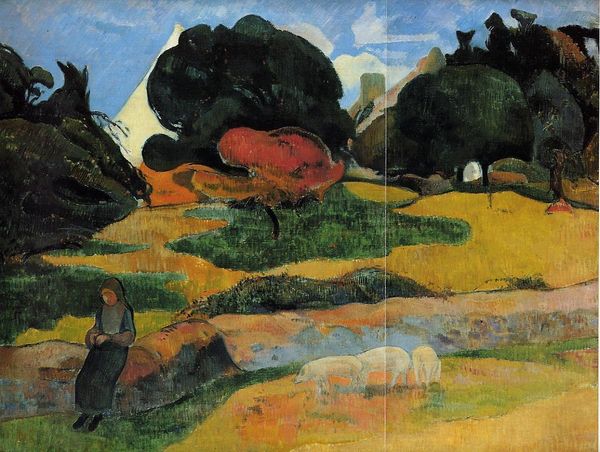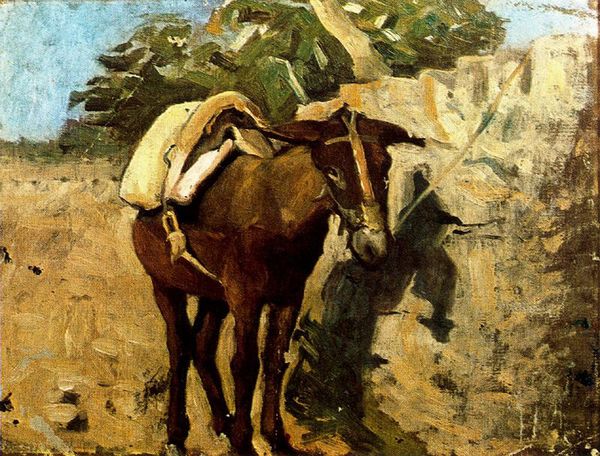
Copyright: Public domain
Editor: Here we have Paul Gauguin’s "Flight," painted in 1901. It's an oil painting depicting two Tahitian men on horseback amidst a vibrant, somewhat dreamlike landscape. I’m struck by the non-naturalistic color palette, and how that influences the whole mood. What's your interpretation of the relationship between form and content here? Curator: Indeed. The painting's significance is largely located within its formal properties. Notice the juxtaposition of intensely saturated hues—the fiery reds, deep blues, and the unnatural cast to the horses. How do these colors interact to create spatial depth? Gauguin is less concerned with mimetic representation than with conveying a subjective experience through the orchestration of color. Editor: So, you're saying that the colors aren't really descriptive, more...expressive? I see what you mean. They almost flatten the space, defying traditional perspective. Curator: Precisely. Look at the brushwork, too. Notice the broad, gestural strokes. Consider their effect. Gauguin simplifies forms and employs a deliberate lack of refinement. Semiotically, this challenges conventional notions of beauty and craftsmanship, replacing them with a more primal, emotive visual language. It seems to function independently of our familiar perceptual reality. Editor: I hadn't considered how the brushstrokes contribute to that primal feel. So it is not necessarily about what he's painting, but how he's doing it? Curator: Exactly! This challenges our expectations of painting as a mimetic exercise and foregrounds the artwork's self-referential nature. Do you notice that even the content matter conforms to this "primitive" intention through the native subject. It is as though there is no mediation between "him" and "them", suggesting equivalence between his inner life and their existence. What we should see, however, is not so much a mirror, but a screen. Editor: That is indeed something to consider. I guess that focusing on his use of color, brushstroke and composition tells us much more than the subject! Thank you. Curator: My pleasure, you're clearly beginning to appreciate the formal dynamics at play.
Comments
No comments
Be the first to comment and join the conversation on the ultimate creative platform.
